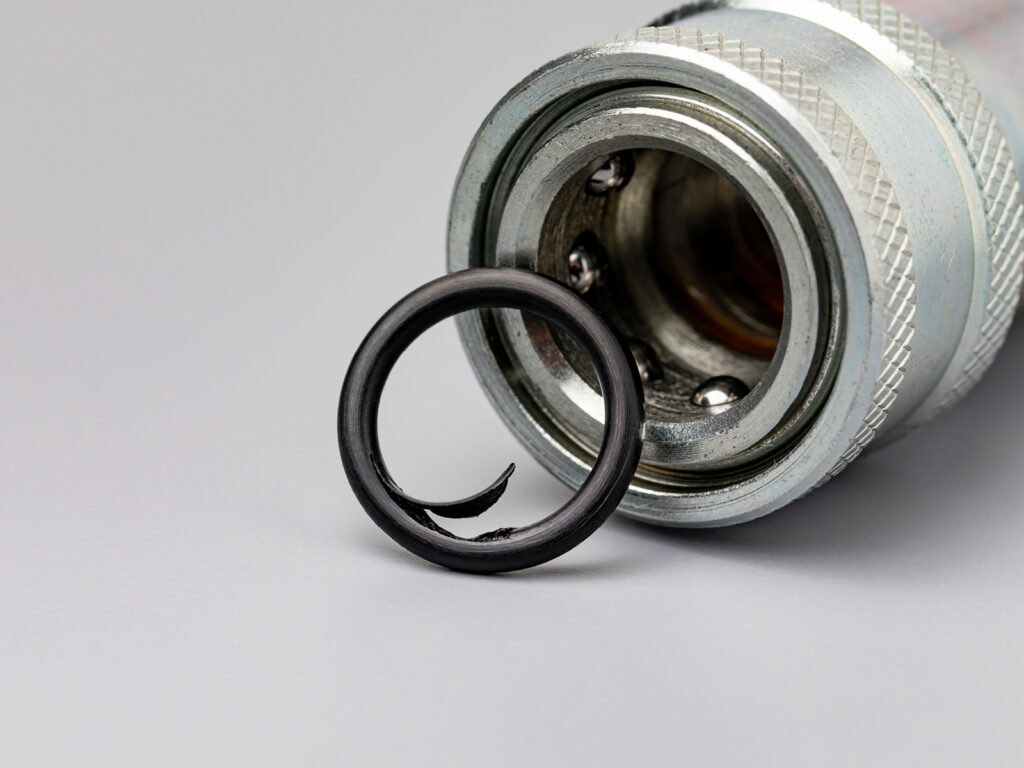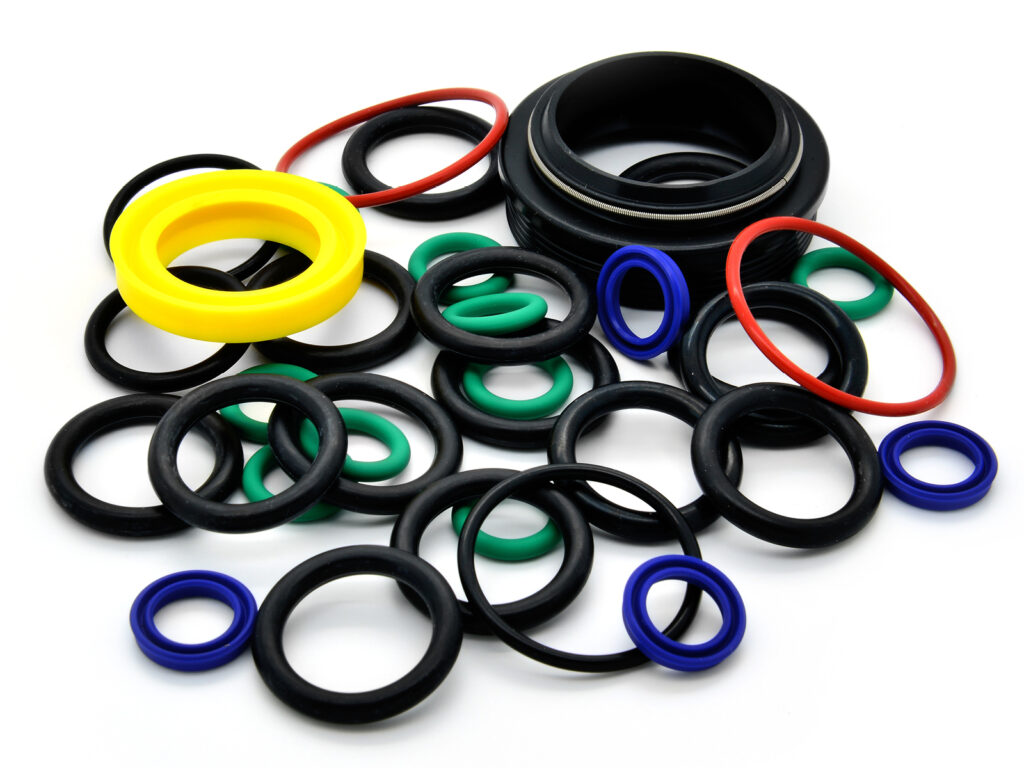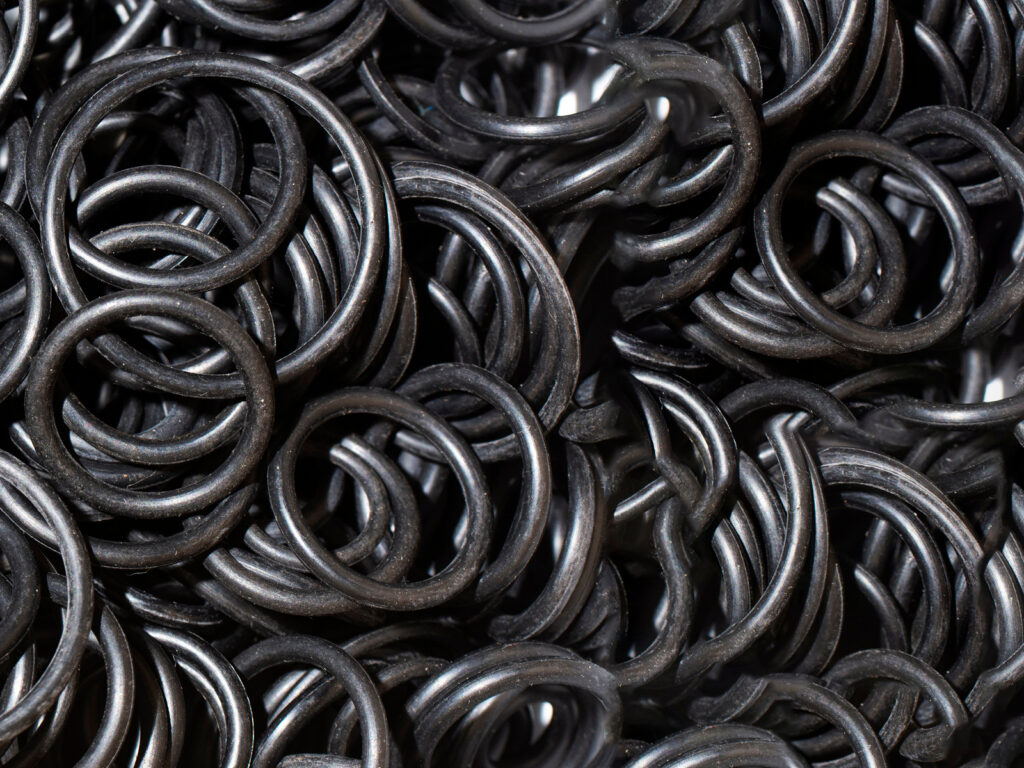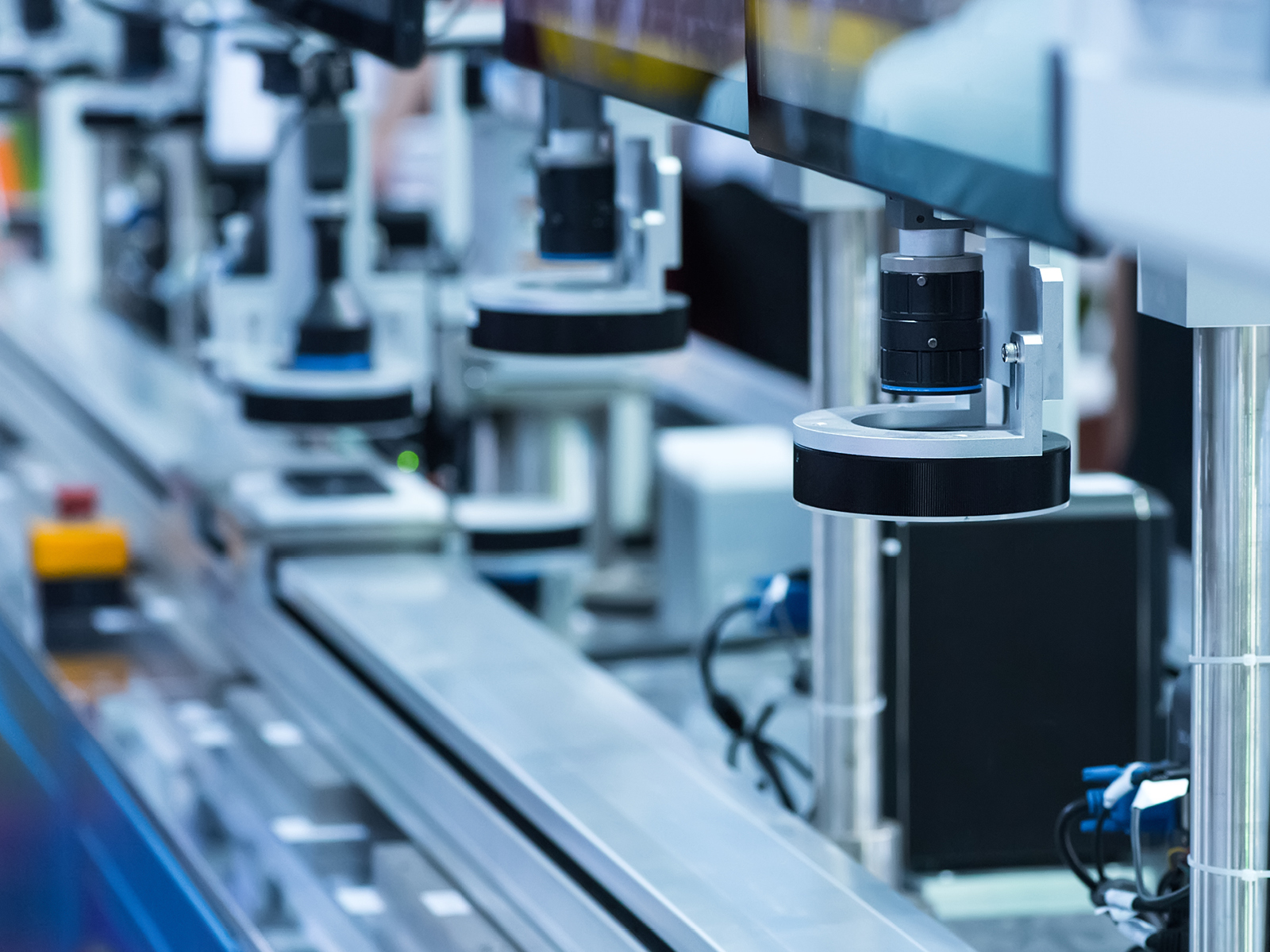Why Chemical Compatibility Matters in Seals
Seals may be small, but they play a massive role in keeping industrial systems running smoothly. Seals must withstand exposure to various chemicals without degrading in chemical processing, pharmaceuticals, aerospace, food production, and several other applications. If the wrong seal material is used, the results can range from minor inefficiencies to catastrophic equipment failure.
Chemical compatibility affects performance, longevity, and safety. A well-matched seal material resists harmful chemical interactions while maintaining its shape and flexibility. It continues to function even under extreme temperatures and pressures. On the other hand, an incompatible seal can swell, crack, dissolve, or break down entirely, leading to costly downtime, leaks, contamination, and even safety hazards.
Choosing the right material isn’t just about making a seal work—it’s about ensuring it works reliably over time. By understanding how different seal materials interact with specific chemicals, industries can avoid premature failures, reduce maintenance costs, and improve operational efficiency.

Potential Issues Caused by Poor Compatibility
Using a seal material that isn’t chemically compatible with its environment can lead to a variety of failures. Here are the most common issues:
1. Swelling
Some elastomers absorb chemicals, causing them to expand. This swelling can increase friction in dynamic applications, make assembly difficult, and prevent the seal from maintaining a proper fit.
- Common causes: Exposure to fuels, acids, solvents, or oils that permeate the elastomer structure.
- Why it’s a problem: The component becomes too large, loses flexibility, and can no longer maintain a tight seal.
2. Dissolution
Certain chemicals can actually break down and dissolve the seal material, weakening its structure and causing premature failure.
- Common causes: Strong acids, aggressive solvents, or high-pH cleaners attacking incompatible materials.
- Why it’s a problem: If a seal degrades or dissolves, it loses its ability to contain fluids, leading to leaks and contamination.
3. Cracking and Brittleness
Chemical exposure can cause some elastomers to become brittle, crack, or develop surface fissures, eventually leading to leaks. This is especially common in applications with ozone, UV exposure, or aggressive cleaning agents.
- Common causes: Harsh chemicals, oxidation, or prolonged exposure to ozone.
- Why it’s a problem: Cracked seals can no longer provide an effective barrier, leading to leaks and potential safety hazards.
4. Discoloration
A visible color change in a seal may seem like a minor issue, but it can be an early sign of chemical degradation. Discoloration can also indicate contamination risks in industries like food and beverage, pharmaceuticals, and medical devices.
- Common causes: Chemical reactions between the seal material and process fluids, heat exposure, or UV light.
- Why it’s a problem: In some industries, a discolored seal may signal degradation or contamination, requiring replacement before performance is affected.

Common Seal Materials for Chemical Compatibility
So which sealing materials offer the best chemical compatibility? We routinely recommend a few, depending on the types of chemicals in your application.
FFKM (Perfluoroelastomer)
- Why? FFKM offers near-universal chemical resistance, withstanding strong acids, bases, solvents, and hydrocarbons. It also maintains elasticity in extreme conditions.
- Best For: Harsh chemical environments where standard elastomers fail, as well as applications requiring high temperatures (up to 600°F/315°C).
- Common Uses: Semiconductor manufacturing, chemical processing, pharmaceutical seals, and aerospace.
FKM (Viton®)
- Why? FKM provides excellent resistance to fuels, oils, and many industrial chemicals. It also holds up well in high temperatures, making it a go-to for demanding applications.
- Best For: Applications that require flexibility, heat resistance (up to 400°F/200°C), and protection against hydrocarbons, acids, and solvents.
- Common Uses: Automotive, aerospace, industrial seals, and fuel system components.
PTFE (Polytetrafluoroethylene)
- Why? PTFE is chemically inert to nearly all chemicals, making it one of the most resilient sealing materials available. It also has an exceptionally wide temperature range (−400°F to 600°F).
- Best For: Static seals, gaskets, chemical pumps, and applications involving highly aggressive fluids.
- Common Uses: Chemical processing, aerospace, and food-and-beverage applications requiring non-contaminating, non-stick surfaces.
EPDM (Ethylene Propylene Diene Monome)
- Why? EPDM has excellent resistance to water, steam, and many acids and bases, making it ideal for common moisture exposure.
- Best For: Low-temperature applications, water-based chemical exposure, and environments with high-intensity steam or cleaning cycles.
- Common Uses: Water treatment, food and beverage, medical devices, and pharmaceutical processing.

Chemical Compatibility Case Studies
Reducing Costs in Mechanical Seal Applications With FFKM
The Challenge
Mechanical seals are widely used in high-speed rotary applications to prevent gas and liquid leaks. While the primary carbon-face seal does most of the dynamic sealing, a secondary internal o-ring is also required to prevent internal leakage.
Many companies rely on premium perfluoroelastomer (FFKM) seals such as Kalrez® and Chemraz® for these applications due to their exceptional chemical resistance and high-temperature durability. However, these materials come at a significant cost, making them a financial burden for manufacturers dealing with aggressive chemicals.
The Solution
Marco Rubber provided a cost-effective alternative to traditional FFKM seals. The engineering team recommended Markez Z1028, a high-performance perfluoroelastomer capable of withstanding temperatures up to 600°F while maintaining resistance to a wide range of aggressive chemicals.
The Results
By switching to Markez Z1028®, manufacturers were able to:
- Reduce costs by 30% to 50% compared to Kalrez® and Chemraz® o-rings.
- Maintain high chemical resistance and performance under extreme conditions.
- Ensure long-term reliability in mechanical seal applications.
Chemical compatibility allows manufacturers to cut costs without sacrificing performance.
High-Temperature Seal Solution for Injection Molding Equipment
The Challenge
A manufacturer of high-temperature injection molding equipment was struggling with seal failures at 400°F caused by exposure to a variety of caustic chemicals. Standard elastomeric seals could not withstand the combination of extreme heat and aggressive chemical exposure, leading to frequent breakdowns and production downtime.
With temperatures pushing the limits of conventional sealing materials, the manufacturer needed a reliable, long-lasting solution that could survive the harsh operating conditions.
The Solution
Marco Rubber’s engineering team recommended a proprietary high-temperature perfluoroelastomer (FFKM) compound—Markez Z1028—capable of handling temperatures up to 600°F while maintaining resistance to caustic chemicals. The team also reverse-engineered the existing seal design to ensure an exact fit with the injection equipment.
The Results
After extensive testing under maximum pressure and temperature conditions, the new Markez Z1028 seal passed all required performance tests and was approved for operation. The benefits included:
- Improved reliability in high-temperature, aggressive chemical environments;
- Reduced downtime by eliminating frequent seal failures; and
- Extended seal lifespan, lowering long-term maintenance costs.
Choosing the right seal material—particularly in high-stress environments—can greatly improve efficiency and reliability in industrial applications.

Assessing Compatibility
Choosing the right seal material is crucial to prevent failures, reduce downtime, and improve long-term performance in chemically aggressive environments.
Not sure which seal material is the best fit for your application? Explore our free Chemical Compatibility Guide today to get expert insights on the best materials for your needs.
